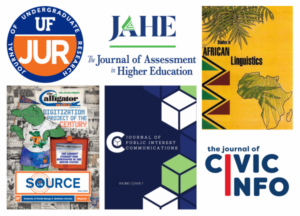Contributors – Chelsea Johnston & Judy Russell
For hundreds of years, libraries have collected, distributed, and preserved print content. The George A. Smathers Libraries at the University of Florida, as a large research library, participates in a significant array of preservation networks where we collaborate with other institutions to ensure future use for monographs, government documents, journals, and other print materials. The preservation of digital content requires the same amount of care and collaboration. We need to work with publishers in order to ensure preservation commitments for the materials for which they are responsible are made and kept. We take on active roles as preservation advocates, as we seek to get preservation commitments from publishers, document these commitments, and regularly follow-up to ensure that those commitments are fulfilled.
This is relatively easy to bring up when we're negotiating licenses for content. It's a bit harder with open access content because, while we do have agreements with a number of open access publishers that include preservation clauses, there's a growing amount of open access content where the library doesn’t have direct involvement. Agreement language is therefore incredibly important, and a recent review of license language about digital preservation sadly revealed that the language is often vague about how much of the content is being preserved, for what time, and in what manner that content would be accessed (or what types of uses would be permissible) if circumstances change and the preservation clauses get activated. Often, the language mixes the idea of post-cancellation access (where, because of a license, we have obtained rights over time to access historical content) with long-term digital preservation and access. It’s hard to verify that content is being preserved in the places and manner in which we expect it to be, and even harder to ensure that it is ready for access in the event of the catastrophe that we hope never comes.
As a result, the Smathers Libraries participate in a number of efforts to develop model license language that supports the work of libraries in negotiating licenses with publishers, such as the collaborative LIBLICENSE project. In developing this language, we noticed the importance of redundancy to ensure preservation. We've all seen situations where having one backup of digital information is simply not enough. So the recommendation that has come forward is that content should be deposited in three mutually trusted digital archives (e.g., a national library, CLOCKSS, or Portico). We also have to be sure that those archiving services are themselves sustainable and reliable sources, so that the investment and effort that's made to archive content will be effective in the long-term.

This discussion about what publishers should do got us thinking about our own role as a publisher. If we expect something of other publishers, we think it's important to also extend that expectation to ourselves. The LibraryPress@UF, as an imprint of the George A. Smathers Libraries and the University of Florida Press, publishes over 20 journals available at Florida Online Journals, a statewide installation of Open Journal Systems (OJS) that hosts journals published by public colleges and universities in Florida working in partnership with an academic library liaison at the responsible institution. Our journals at Florida Online Journals are archived through the PKP Preservation Network, which is a LOCKSS preservation network. The PKP PN is a wonderful option and a trusted source, but inspired by the discussion that content should be preserved in three mutually trusted places, we began to consider additional options. Over the years, we had been resistant to archiving journals through CLOCKSS or Portico partly because of a misperception of great expense and effort. In 2023, the Libraries decided to invite official quotes for those services.
We began by asking CLOCKSS to review our journal portfolio and give us a quote for archiving. To get an idea of the volume of content from the LibraryPress@UF’s portfolio of journals, we reviewed annual article publishing statistics for the life of each title. This gave us concrete numbers for the amount of published content that would need to be ingested by CLOCKSS, as well as estimates for future publishing activity. Using these numbers, CLOCKSS prepared a quote for consideration. Surprisingly, with a modest annual fee for membership and ingest fees for content, it was relatively inexpensive. We were pleased to move forward.
Next steps were easy. Open Journal Systems (OJS) has built-in functionality to enable archiving through services like CLOCKSS by a simple checkbox in each journal’s Distribution Settings. CLOCKSS verified that the settings were effective for each title, requesting adjustments as necessary. For example, ISSNs are required to archive titles. We found that some of our earliest journals had not procured ISSNs, having requested publishing support from the Libraries before the Libraries had a formal program. In order to have their content archived by CLOCKSS, we had to apply for ISSNs for these titles. This was an interesting opportunity to reflect on how the LibraryPress@UF has grown in output and operations.
Now, journal content published by the LibraryPress@UF is archived by three trusted sources: CLOCKSS, the PKP PN, and the University of Florida Libraries’ staff and services.
Digital preservation requires financial resources and staff capacity. Multiplying that commitment by three is not something to take lightly. However, as publishers, we have a responsibility to ensure that our work is accessible now and in the future. This commitment supports our work and sustains our research. It is well worth the effort.

